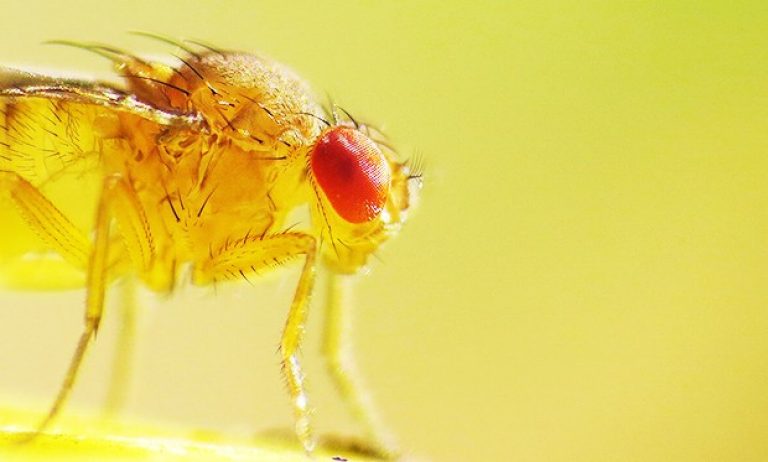A new literature review may help reveal the mechanisms behind kidney disease

Consider the fruit fly — more than just a kitchen pest. It may contain the key to unlocking the mysteries of kidney disease.
To further the study of renal function, Concordia researchers conducted a review of the literature comparing kidney function in humans and the Drosophila melanogaster (fruit fly).
“Our review will hopefully become a go-to resource to understand renal function in a broader way and to appreciate the possibilities that exist in the branch of model organism research that utilizes the mighty fruit fly,” says Chiara Gamberi, an affiliate assistant professor of biology and part time faculty member in Concordia’s Faculty of Arts and Science.
Published in May, the review considered more than 151 articles, mostly on primary research.
“The earliest paper was from 1864, going all the way up to 2018,” says lead author and current graduate student in biology Cassandra Millet-Boureima (GrDip, 2016).
Why the fruit fly?
Fruit flies have been used to dissect molecular mechanisms of organ function that are too complex to resolve in vertebrates, including rodents. The human kidney is one such complex organ.
Kidneys are particularly challenging to investigate because of the difficulties of isolating the nephrons — tiny tubes that filter substances from body fluids. The fruit fly equivalent, small though it is, acts as an effective stand-in, with the added advantage of allowing researchers to rapidly assess genetic and chemical influences because of the fruit fly’s short lifespan.
“As proof of the usefulness of fly research, the 2017 Nobel prize was awarded for research carried out in the fly. It was the sixth Nobel prize for fly research, to date,” says Gamberi.
The literature review comes on the heels of Gamberi and her colleague’s recent development of an innovative fly model of the types of harmful cysts that can form on kidneys. The model has potential for assisting the study of the mechanisms of polycystic kidney disease and cancer. That study was published in PLOS Genetics in April 2017.
“For us, as researchers in the field, the literature review is an excellent way to put ideas in order and lay the foundation for new research directions,” says Gamberi.
As the literature review makes clear, the fruit fly possesses an evolutionary intermediate between glomerular and non-glomerular renal systems, consisting of anatomically separated renal tubules and nephrocytes that, together, fulfill its renal functions.
“The fruit fly’s structurally streamlined, anatomically isolated renal structures can be easily microdissected and studied biochemically,” says Millet-Boureima.
“The fly’s two pairs of Malpighian tubules [used for filtration] turn out to be functionally complex, which makes it an asset for modeling human renal disease. Moreover, the fruit fly can be probed genetically utilizing the vast array of Drosophila genetic tools available,” says Gamberi.
The literature survey also outlines studies that illustrate successful modeling of human renal function in the fly, such as the formation of kidney stones (calcium oxalate nephrolithiasis), as well as the study led by Gamberi — published in PLOS Genetics — on the development of renal cysts, polycystic kidney disease (PKD) and autosomal dominant polycystic kidney disease (ADPKD).
“In multiple cases where human renal disease has been modeled in the fruit fly, the similarities seemed to extend to pharmacological responses, echoing similar examples in other fly disease models,” says Millet-Boureima. “Development of pharmacological screen protocols in the fly may, in the future, provide a rapid and effective alternative strategy for drug discovery.”
Partners in research: Chiara Gamberi received three consecutive grants from the Concordia University Part-Time Faculty Association’s Professional Development Fund to support her research on the use of fruit flies to identify new treatments for polycystic kidney disease. In addition, the project received funding from BH BioScience (CEO Sam Tayar MBA, Felix Polyak Ph. D., and Roman Rozencwaig, M. D. C. M.), through the MITACS Canada program.
Read the cited study.
Contact
Public Affairs
514-848-2424, ext. 5068
patrick.lejtenyi@concordia.ca
@ConcordiaUnews




